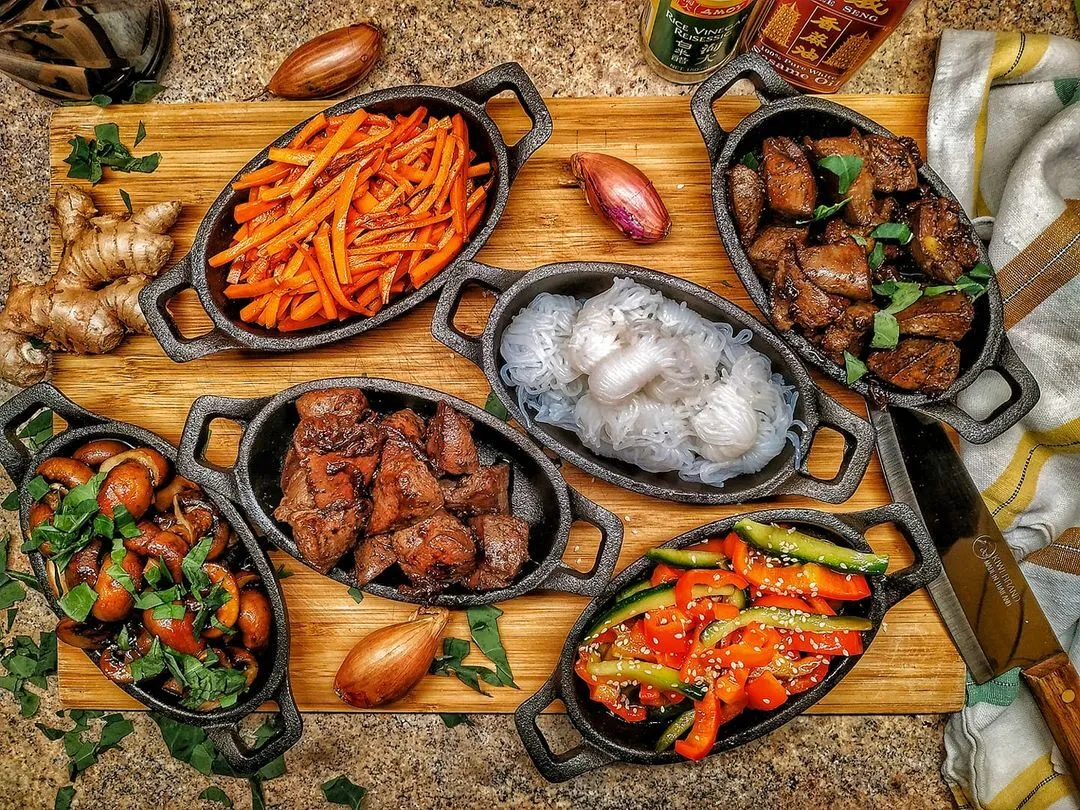
Guide to Cleaning and Reseasoning Your Cast Iron Skillet for Optimal Performance
Cleaning and Re-seasoning a Cast Iron Skillet
Cast iron skillets are known for their durability and unmatched heat retention, making them a favorite among many cooking enthusiasts. However, maintaining a cast iron skillet is crucial to preserve its non-stick surface and prolong its life. In this article, we will delve into the steps for cleaning and re-seasoning your cast iron skillet, ensuring that it remains a cherished kitchen tool for years to come.
Why Clean and Re-season?
Cleaning and re-seasoning a cast iron skillet are essential practices for multiple reasons. Over time, residues from food, cooking oils, and accumulated grime can build up on the surface, potentially leading to rust and a deterioration of the skillet’s non-stick properties. Regular cleaning removes this buildup, while re-seasoning restores the protective layer of oil that not only keeps food from sticking but also enhances the skillet’s overall longevity.
Cleaning Your Cast Iron Skillet
1. Immediate Care After Cooking The best time to clean your cast iron skillet is immediately after use. While the skillet is still warm (but not too hot to handle), use a spatula to scrape off any stuck-on food particles. Avoid using soap, as it can strip the seasoning.
2. Rinsing and Scrubbing Rinse the skillet under warm running water. For stubborn residues, use a non-metal brush or a non-abrasive scrubber. If necessary, you can sprinkle some coarse kosher salt into the skillet and use a little water to create a paste; this acts as a gentle abrasive that helps lift stuck-on food without damaging the seasoning.
3. Drying After cleaning, it is essential to dry your skillet thoroughly. Water can lead to rust, which is why it is important to wipe it down with a clean cloth or paper towel. For extra precaution, place the skillet on a low burner for a few minutes to ensure that all moisture has evaporated.
Re-seasoning Your Cast Iron Skillet
Re-seasoning your cast iron skillet involves applying a layer of oil to create a non-stick surface and protect the skillet from rust. Here’s how to do it
cleaning and reseasoning a cast iron skillet

1. Choosing the Right Oil Select an oil that has a high smoke point, such as flaxseed oil, vegetable oil, or canola oil. These oils will create a durable layer when heated.
2. Applying Oil Once the skillet is clean and dry, pour a small amount of oil (about a tablespoon) into the center of the skillet. Use a paper towel to spread the oil over the entire surface, including the bottom and handle, ensuring an even coating. Wipe away excess oil to prevent a sticky residue.
3. Baking the Skillet Preheat your oven to 450°F (232°C) and place the skillet upside down on the middle rack. To catch any drips, place a sheet of aluminum foil on the lower rack. Bake for about one hour. This process allows the oil to bond with the cast iron, forming a strong non-stick layer.
4. Cooling Down After an hour, turn off the oven and allow the skillet to cool down inside the oven. This gradual cooling process helps to set the seasoning.
5. Repeating the Process Depending on the condition of your skillet, you may want to repeat the oiling and baking process two to three times to build up a durable seasoning layer.
Maintenance Tips
To keep your cast iron skillet in top shape, consider these maintenance tips
- Avoid Soaking Never soak your cast iron skillet in water, as prolonged exposure can damage the seasoning and lead to rust. - Occasional Cooking with Fat Cooking with oils or fats can help maintain the seasoning. When frying or sautéing, use ample oil to keep the skillet well-seasoned. - Storing Store your skillet in a dry place to prevent moisture build-up. If stacking with other cookware, place a paper towel between items to absorb moisture.
Conclusion
Maintaining a cast iron skillet through regular cleaning and re-seasoning is not just a chore; it is a rewarding practice that enhances your cooking experience. By following these steps, you can ensure that your skillet remains in excellent condition, delivering delicious results meal after meal. Embrace the process of caring for your cast iron skillet, and it will serve you faithfully for generations.
-
Cast Iron Cookware Pancake Pan- ZD Cookware|Non-Stick, Even Heat, DurableNewsAug.02,2025
-
Cast Iron Cookware- Baixiang County Zhongda Machinery|Non-Stick, Heat RetentionNewsAug.02,2025
-
High Quality Kitchen Durable Black Round Cast Iron Cookware Pancake Crepe Pan With Wooden Handle|Non-Stick Surface&Heat RetentionNewsAug.02,2025
-
Authentic Traditional Chinese Wok for High-Performance CookingNewsAug.02,2025
-
Season Cast Iron Perfectly with GPT-4 Turbo TipsNewsAug.01,2025
-
High Quality Cast Iron Cookware - Baixiang County Zhongda MachineryNewsAug.01,2025


